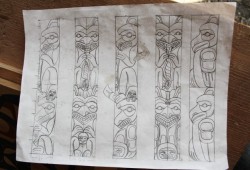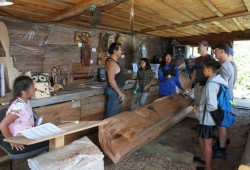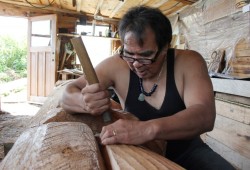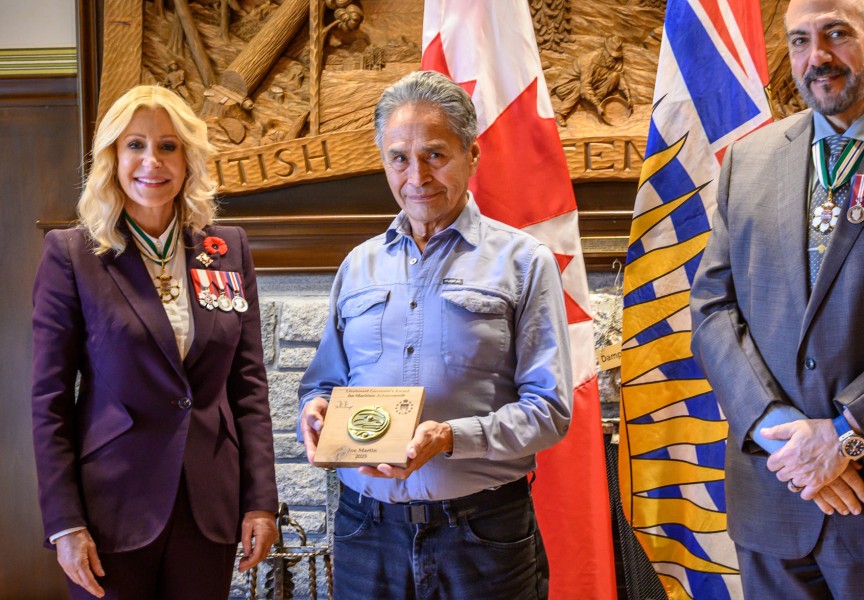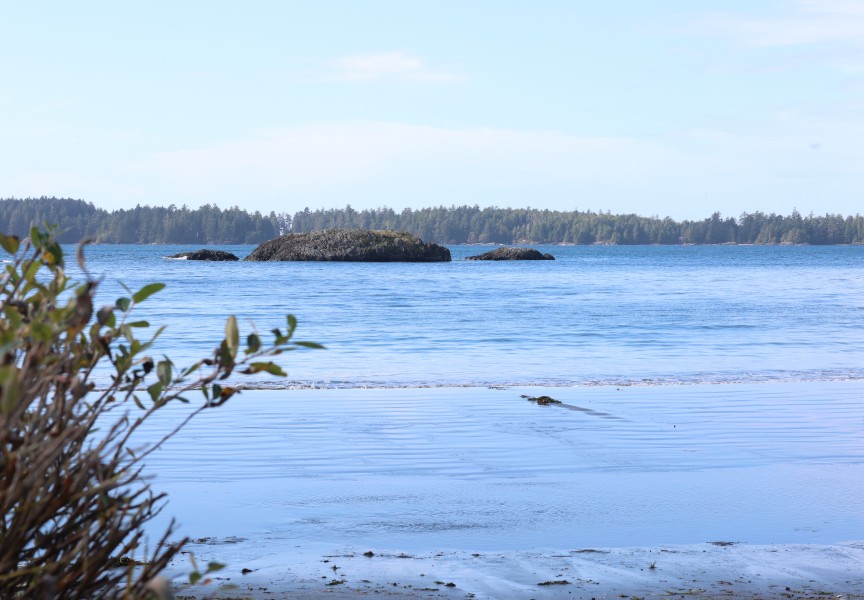Inch by inch, the images of a wolf, killer whale and eagle are becoming evident under Sanford Williams’ carving knife. It’s a morning in late July at Williams’ carving shed on the shore of Yuquot, an ancient Mowachaht settlement on the south end of Nootka Island where he grew up.
“The calmness of being here, it’s so nice - even just listening to the waves coming in,” said Williams as he works through the final stages of the totem pole. “I can sometimes feel the spirits when I come here. It sometimes feels like they’re guiding me.”
The carver spends most of the year in Hope, where he lives with his wife Marlana. In the summer he returns to Yuquot, where his parents Terry and Ray Williams have the only remaining household since the Mowachaht/Muchalaht First Nation relocated its on-reserve community to Gold River in the late 1960s. With a cedar smell seasoning the air, chips fall to a thick bed of shavings on the ground, an indication of Williams’ years of exertion into forming images out of wood.
His latest creation is carved from a cedar log that Williams found on Yuquot’s beach in June.
“Every time I come home I go scouting the beaches looking for logs,” said the carver. “We get a lot of logs that drift in during the winter.”
Plans are for the totem pole to be erected outside a Canadian Coast Guard Station in Tahsis. This summer construction began on the station, which will serve the surrounding Nootka Sound area, with a scheduled completion in 2020.
Earlier this year the Coast Guard approached Williams for the project, asking for designs. He began working on the log with an electric chainsaw, carving out basic shapes. Then, using his hand tools, details became more refined. He says the process quickens with each progressive stage as the final images become more evident.
“First stage is roughing, second stage is getting it all ready for designing,” he said. “It ends up getting quicker as you go along.”
The totem pole depicts a wolf transforming into a killer whale, a sacred being in the Nuu-chah-nulth world. The importance of the orca was evident in July 2001 when a lone killer whale was spotted in Nootka Sound, three days after the passing of Mowachaht/Muchalaht Tyee Ha’wilth Ambrose Maquinna.
“Our chief, when he died he wanted to come back as a killer whale,” recalled Williams. “That was when Luna came around.”
On the top of the totem pole is an eagle, a design addition made after consultation with the First Nation’s elders. Williams said his people turn to the eagle for guidance.
“He’s way up in the sky watching over the ocean and the ground because he goes after small critters on the ground and he goes after fish in the ocean,” he said. “That’s kind of how coast guard and search and rescue is here; on the lookout for people in distress.”
The totem pole is part of a body of work 38 years in the making, a career that had its origins during Williams’ childhood in Yuquot. He remembers watching his uncle, the late Dominic Andrew, work with wood while staying with the family.
“He used to wake up real early in the morning,” said Williams. “I used to kind of watch him. It got my interest. Then I started painting on canvas.”
His dedication to art intensified at the age of 14 when Williams made his first carving.
“My mom said, ‘If you can draw and paint, you can carve’. So I really thought about it back then,” he said. “I locked myself in my room for about four days and came out with a mask.”
After high school, Williams attended the Gitanmaax School of Northwest Coast Indian Art in Old Hazelton, B.C. for four years. He ended up living there for 11 years, developing his craft. He often assisted carvers when they had contracts in the area.
“That’s how I learned to do large projects like these poles, was through the master carvers in the summertime,” said Williams.
When the totem pole is eventually erected in Tahsis, Williams hopes the piece will remind people of the land the new Coast Guard station was built on. Tahsis historically served as a winter home for the Mowachaht/Muchalaht First Nation.
“I’m hoping that it will change more things in the future. When new buildings go up that are on native land, that we’ll have that connection. This here is just a start,” he said.



